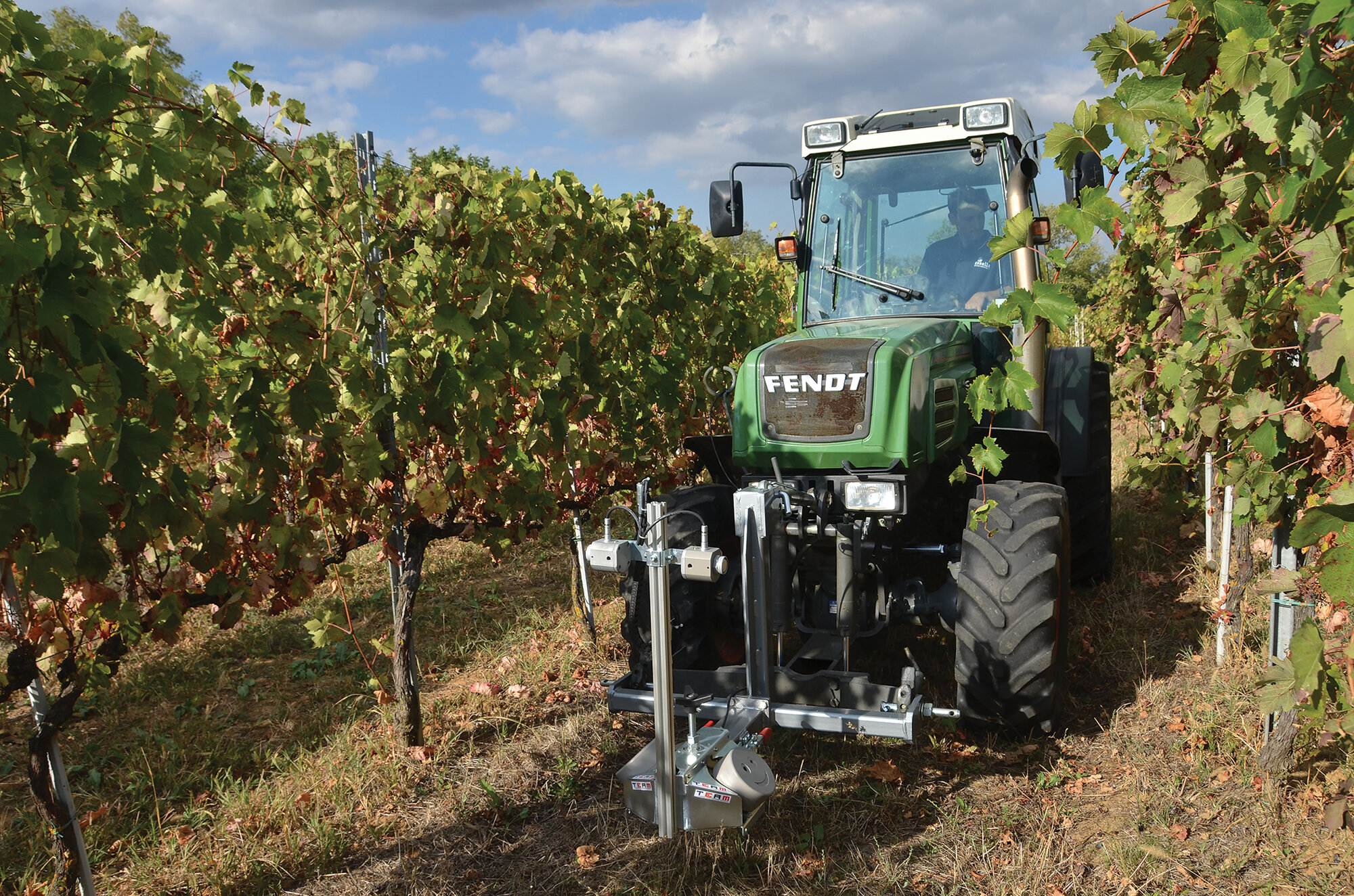Data-driven Vineyard Precision Management - VINPREC
Promoting the uptake of precision strategies in viticulture by developing an application for growers which provides decision-making support for routine operations based on sensors attached to machinery.

Concept
Up until now consistent precision strategies in viticulture were underutilised since the sub-sector is still very bound to traditions. Hence, this Flagship Innovation Experiment (FIE) develops a user-friendly application for growers, providing warning and decision-making procedures for several operations including spraying, fertilisation, summer pruning or selective mechanical harvesting. Innovative technology is needed to monitor the performance of grapevine plants as they are sensitive to environmental conditions.
By attaching a multi-sensor apparatus to agricultural machinery, insightful data is gathered during routine mechanical operations in order to, for instance, identify the zones more likely to suffer from water stress. The system integrates for instance a GPS and an infrared camera, as well as the Enhanced Canopy Sensor. The Enhanced Canopy Sensor (ECS) can be used for canopy characterization and crop stress detection of vineyards or other fruit crops arranged in hedgerow systems. This happens by means of a mobile rover that collects data for further post-processing aiming at producing thematic maps of the surveyed parameters (canopy vigour and canopy surface temperature). No specific adjustments are needed to use ECS in other-than grapes orchards. A fixed station collects and sends data over the web for storage and visualization purposes at fixed time intervals. This function is a very nice complement to the ECS sensor.
The resulting amount of potentially usable information is immense and in combination with generated high-resolution maps, the vineyard manager can assess crucial parameters straightaway. This application is therefore well-suited for smaller farms as it reduces their reliance on external imagery collected through satellites or drones, which are prone to adverse weather conditions and therefore make the acquisition of remote imagery costly.
Implementation
The solution was deployed in 3 farms. The farmers were all involved in field tests. They supported demonstration activity by providing access to the vineyards as well as the availability of the on which the sensor was mounted.
The system developed in 2019 was used during surveys at 2 of the farms. During the first test, an overheating problem of the prototype was observed.
Hence, further radiative insulation of the enclosure was requested in order to maintain the sensors inside the system in proper working conditions. This led to an appropriate change in the appearance and internal composition of the system enclosure. The infra-red camera sensor was replaced with an infrared (IR) sensor (Melexis MLX90621), which could guarantee better operational robustness and reliability.Critical issues were encountered in the integration of the thermal sensor in the whole system. The thermal sensor has therefore been integrated using silicone to prevent any damage. Immediately after harvest and until the second half of December, a very unusual period of continuous and intense precipitations has made it impossible to enter the vineyards with the second prototype to perform the surveys. Therefore, the test in the vineyard was carried out in January, as soon as the weather and soil conditions allowed the tractor passage in the field.
The implementation and adjustments allowed the technology to reach TRL7 which means that the system prototype can be demonstrated in an operational environment.
Lessons Learnt
The market scouting phase was very important as it help identify the most important needs for end-users and the importance of adapting sensor features with conditions encountered in a real environment.
During an online workshop in October 2020, many farmers pointed out how difficult it is today to adopt precision farming techniques when using over-complex technologies. For this reason, the ECS sensor was praised for its simplicity.

